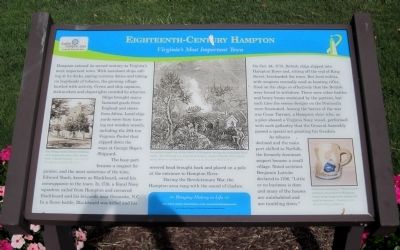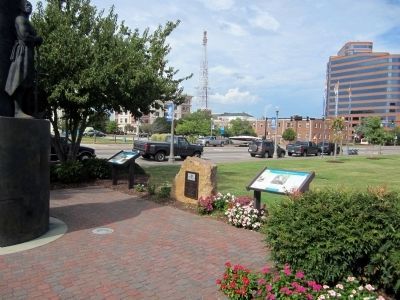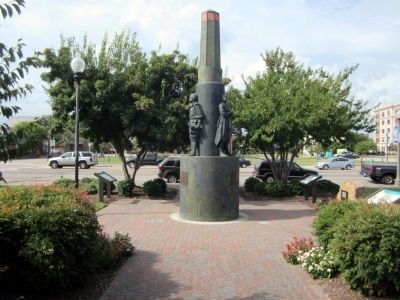Victoria Boulevard Historic District in Hampton, Virginia — The American South (Mid-Atlantic)
Eighteenth-Century Hampton
Virginia’s Most Important Town
The busy port became a magnet for pirates, and the most notorious of the time, Edward Teach, known as Blackbeard, owed his comeuppance to the town. In 1718, a Royal Navy squadron sailed from Hampton and cornered Blackbeard and his brigands near Ocracoke, N.C. In a fierce battle, Blackbeard was killed and his severed head brought back and placed on a pole at the entrance to Hampton River.
During the Revolutionary War, the Hampton area rang with the sound of clashes. On Oct. 24, 1775, British ships slipped into Hampton River and, sitting off the end of King Street, bombarded the town. But local militia, with weapons normally used as hunting rifles, fired on the ships so effectively that the British were forced to withdraw. There were other battles and heavy losses sustained by the patriots, but each time the enemy designs on the Peninsula were frustrated. Among the heroes of the war was Cesar Tarrant, a Hampton slave who, as a pilot aboard a Virginia Navy vessel, performed with such gallantry that the General Assembly passed a special act granting his freedom.
As tobacco declined and the main port shifted to Norfolk, the formerly dominant seaport became a small village. Noted architect Benjamin Latrobe declared in 1796, “Little or no business is done and many of the houses are uninhabited and are tumbling down.”
(captions)
(left) The Kings’ Arms Tavern building as it appeared years after Hampton’s colonial heyday. – Courtesy of the Hampton History Museum
(center) An artist’s rendition of the Battle of Hampton during the American Revolution. The drawing was published in Mary Tucker Magill’s 1873 schoolbook, History of Virginia. – Courtesy of the Hampton History Museum
(right) A German stoneware “Westerwald” tankard, excavated in Hampton. These large mugs were commonly used in taverns. – Courtesy of the Hampton History Museum
Erected 2010.
Topics. This historical marker is listed in these topic lists: Industry & Commerce • War, US Revolutionary • Waterways & Vessels. A significant historical year for this entry is 1718.
Location. 37° 1.47′ N, 76° 20.606′ W. Marker is in Hampton, Virginia. It is in the Victoria Boulevard Historic District. Marker is at the intersection of Settlers Landing Road (U.S. 60) and South King Street, on the left when traveling west on Settlers Landing Road. Touch for map. Marker is at or near this postal address: 602 Settlers Landing Road, Hampton VA 23669, United States of America. Touch for directions.
Other nearby markers. At least 8 other markers are within walking distance of this marker. Seventeenth-Century Hampton (here, next to this marker); Ninteenth-Century Hampton (a few steps from this marker); Twentieth-Century Hampton (a few steps from this marker); Langley Field: Creating an Air Force (a few steps from this marker); Hampton (a few steps from this marker); Langley Field: Discovering Aerospace (a few steps from this marker); Dr. Katherine G. Johnson (within shouting distance of this marker); British Approach to Hampton / The War of 1812 (within shouting distance of this marker). Touch for a list and map of all markers in Hampton.
Credits. This page was last revised on February 1, 2023. It was originally submitted on September 2, 2014, by Bernard Fisher of Richmond, Virginia. This page has been viewed 805 times since then and 31 times this year. Photos: 1, 2, 3. submitted on September 2, 2014, by Bernard Fisher of Richmond, Virginia.


